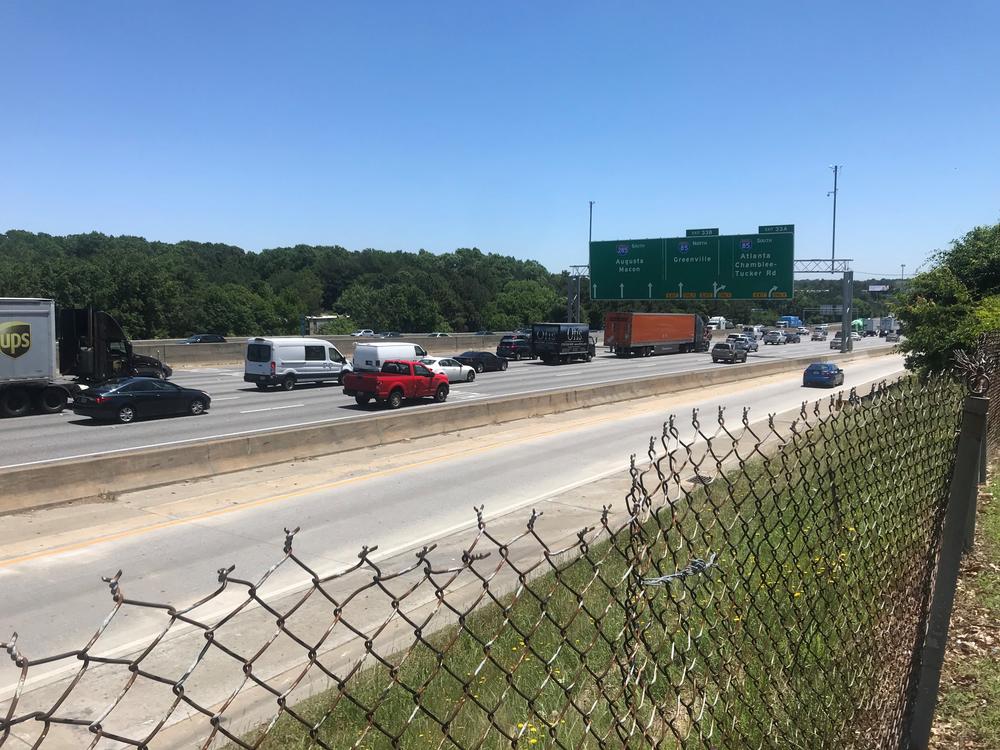Section Branding
Header Content
GDOT's Plan To Solve Atlanta Traffic Issues Raises Concerns For Residents
Primary Content
You can’t talk about Atlanta without discussing its close relative, traffic.
All it takes is one trip down I-75 or I-85 during rush hour to make you question why you ever thought driving on the highway was a good idea. The cars on the highway can seemingly stretch for miles with little movement for minutes at a time.
And then there’s I-285, which has earned the monikers “the connector” or “the perimeter.” It serves as the way to avoid 75 and 85 and allows you travel between the two.
Express Lanes You Say?
Traffic on the highway loop around Atlanta can be just as bad if not worse than the two veins that run through downtown. It even caused John Ford, who lives in Embry Hills, to change jobs.
“I used to travel a lot on the 285 corridor and had a 2 and a half hour commute to Kennesaw and back,” Ford said.
It’s a commute that during non-rush hours, takes anywhere between 30 and 50 minutes. He works downtown now and said that shaved an hour off his commute.
To alleviate the seemingly constant congestion, Georgia’s Department of Transportation wants to add express lanes on the top end of I-285, from I-75 on the west to I-85 on the east.
“We believe express lanes is our way to manage the amount of traffic or demand in those lanes to give those users the reliable trip time they’re looking for,” Tim Matthews with the department said.
According to GDOT, some 240,000 cars travel along this route every week day.
The department has started holding public meetings to inform residents of their plan- to have two dedicated lanes running in each direction, separated by a barrier.
To access them, you’ll need the Peach Pass, meaning you can avoid traffic if you’re willing to pay for it. A roundtrip during rush hour could cost you about $15 to $20.
Expanding The Highway
Adding lanes also comes with the threat of property acquisition, which isn’t new in I-285’s history.
During construction in the late '60s, the state had to siphon property from people like Jean Mims who lived in Doraville at the time.
“We built houses right here and 285 took our houses in ’58,” Mims said. She’s 86 years old and rebuilt her home just a few streets over.
And six decades later, she wonders if she could face a similar fate.
“I hope it’s not gonna take it again?” Mims said. “You think so? I mean is it going to be that far down?” she pondered after seeing GDOT’s early renderings.
Even though she knows what it’s like to lose a home for a highway, Mims said express lanes are what drivers need.
“I mean something’s got to be done,” Mims said. “So, it’s going to hurt a lot of people moving, taking the houses but with as many people here and cars, we’ve got to have some solutions.”
Affordable Housing Issues
The idea of snagging property for potential highway expansion doesn’t sit well with Stephe Koontz, a Doraville city councilwoman. She worries some of the homes GDOT might take to add express lanes could be some of the last affordable housing in the region.
But Phil Copeland, who’s with the department, said if that does happen, GDOT has a plan.
“We have to find available housing that’s comparable to the housing someone’s being displaced from,” Copeland said. “If there just simply not housing available at the price that we’re paying, there’s also relocation funding available to bridge that difference.”
Koontz said it’s not that simple. Instead, traffic problems arise because of increasing housing prices.
“A lot of the traffic is because of the lack of workforce housing,” Koontz emphasized. “People are having to live further and further out to be able to be at 30 or 40% of their income as their housing.”
But you can’t talk traffic and affordability without public transportation. Part of the plan is to also allow buses to run in the express lanes for free.
However, relief isn’t going to be here tomorrow. Construction on the interstate isn’t planned to start until 2023 and finish until 2028.

